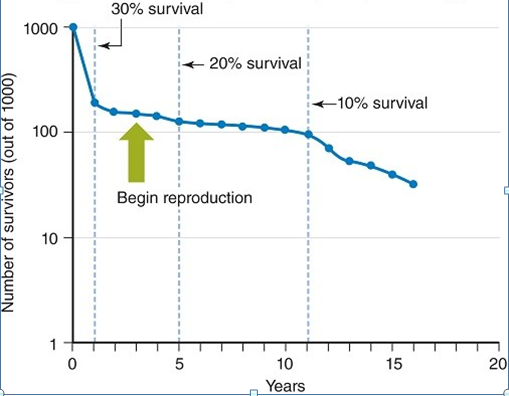Most mutations are:
a) beneficial or neutral to the organism in which the mutation takes place.
b) random with respect to the environmental needs of the organism in which the mutation takes place.
c) accounted for by the Hardy-Weinberg equilibrium.
d) found in the cytoplasm.
e) found in regulator genes.
Ans: b) random with respect to the environmental needs of the organism in which the mutation takes place.
You might also like to view...
In this graph of yellow-eyed penguins, the data indicate that

A. 10% of the yellow-eyed penguins live to eleven years of age.
B. reproductive age of the yellow-eyed penguins is three years.
C. most of the yellow-eyed penguins die in their first year of life.
D. All of the answer choices are correct.
E. just less than 30% of the yellow-eyed penguins survive to reproductive age.
The stage of an infectious disease when specific signs and symptoms are seen and the pathogen is at peak activity is the ________.
A. incubation period B. convalescent stage C. prodromal stage D. period of invasion
How many copies of a specific allele does a somatic cell have?
a. 1 b. 2 c. 23 d. 46 e. 92
Do you agree with the strategy of xenotransplantation to alleviate the shortage of donated human organs? Why or
why not? What will be an ideal response?